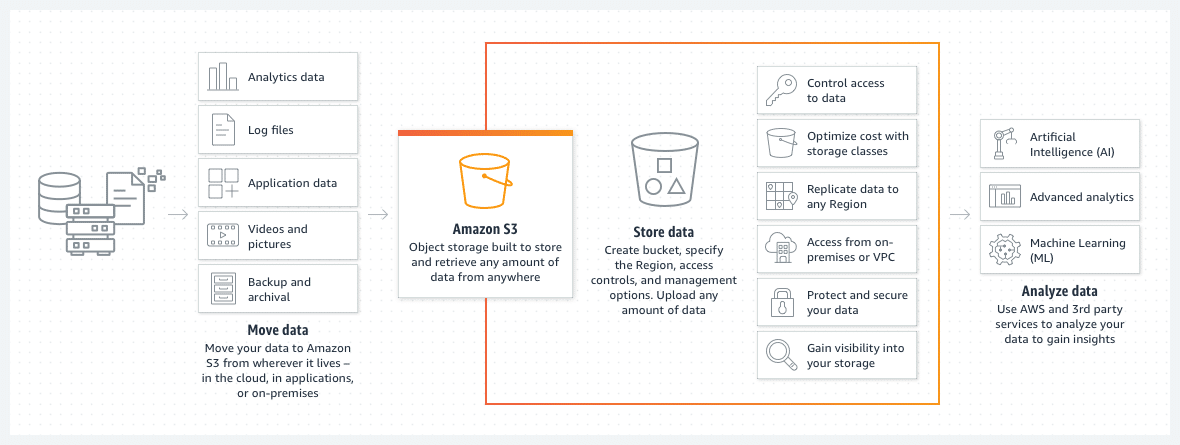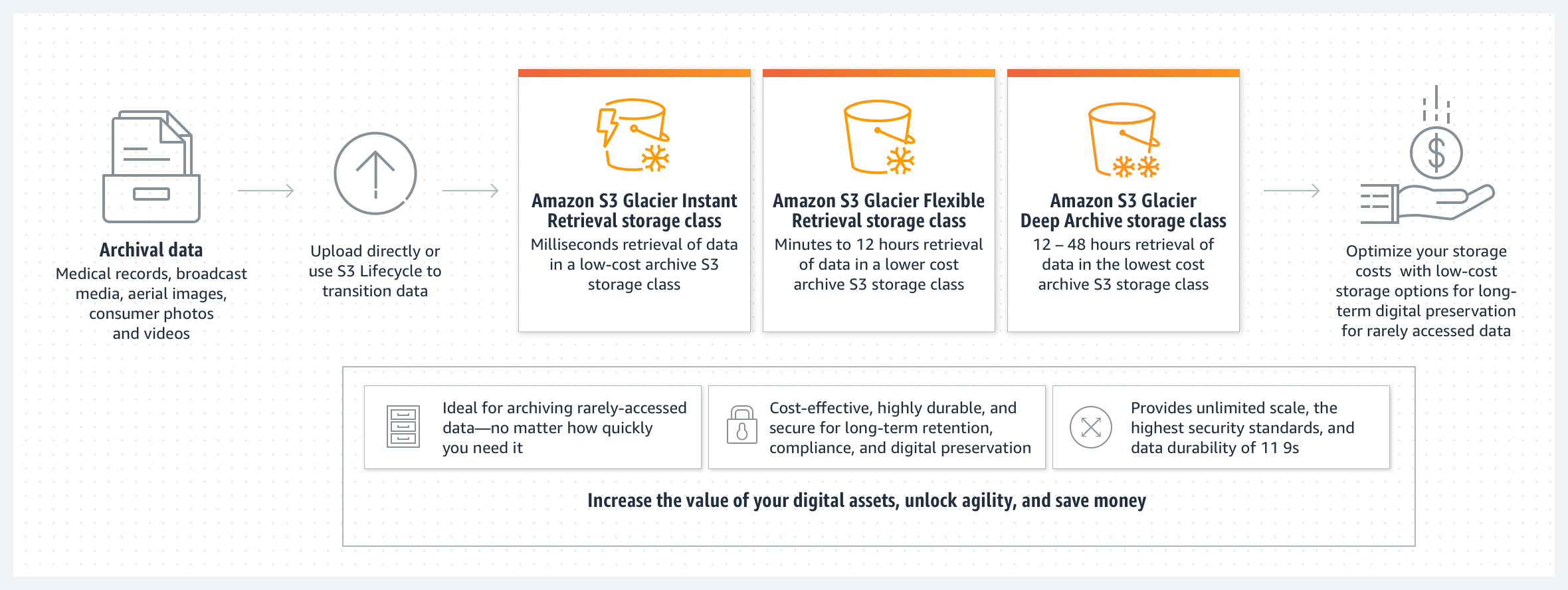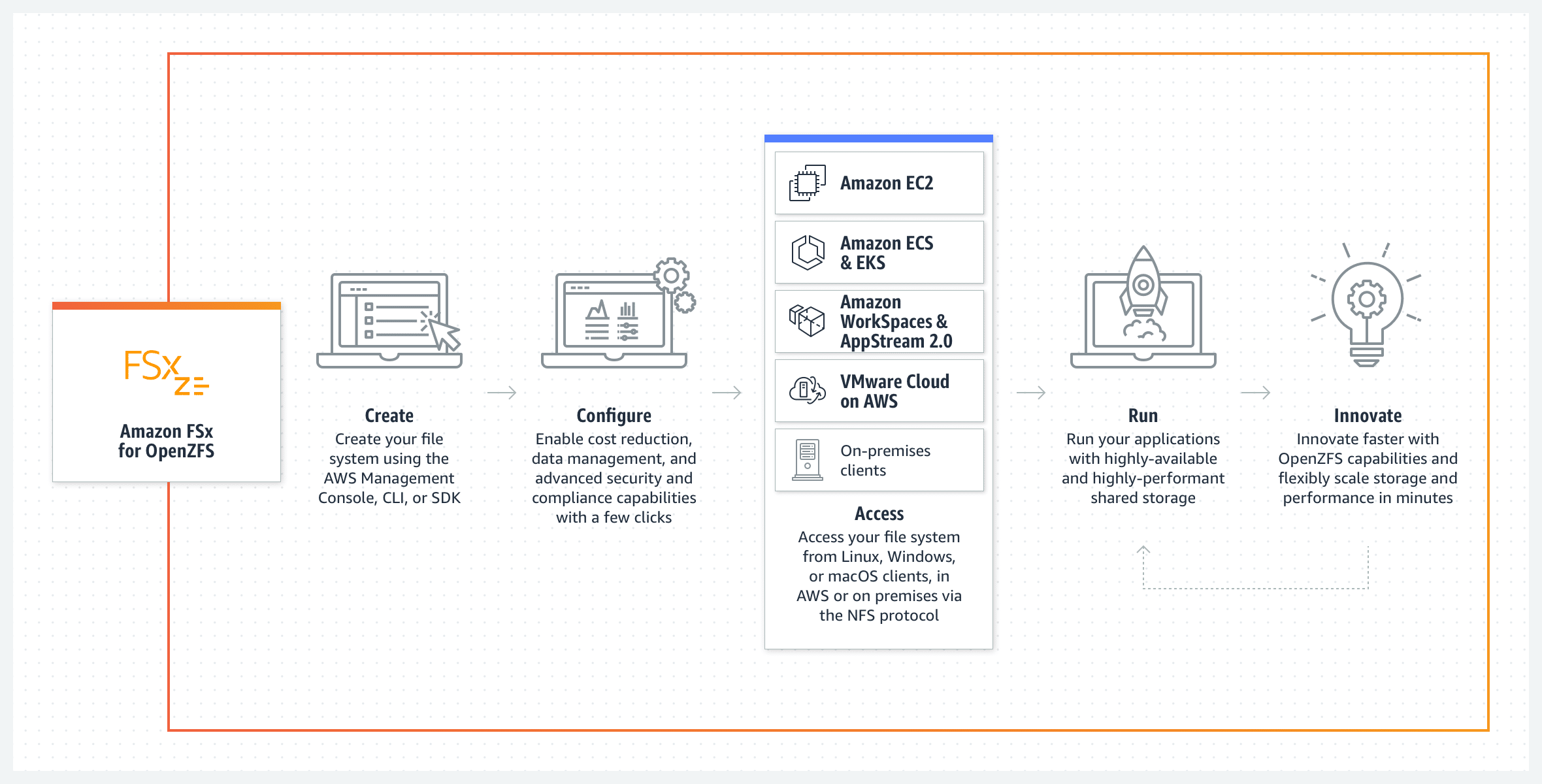Amazon announced four new storage services and capabilities at AWS re:Invent that deliver more choice, reduce costs, and help customers better protect their data. Amazon Simple Storage Service (Amazon S3) Glacier Instant Retrieval is now available as a new access tier in Amazon S3 Intelligent-Tiering. Amazon FSx for OpenZFS, a managed file storage service that makes it easy to move on-premises data residing in commodity file servers to AWS without changing application code or how the data is managed. Amazon Elastic Block Store (Amazon EBS) Snapshots Archive, a new storage tier for Amazon EBS Snapshots, reduces the cost of archiving snapshots by up to 75%. AWS Backup now supports centralized data protection and automated compliance reporting for Amazon S3 and VMware workloads running on AWS and on-premises. The new storage innovations provide customers greater flexibility in managing storage while lowering costs and improving data management and protection capabilities.

New Amazon S3 Glacier Storage Class, Also Available as a New Access Tier in Amazon S3 Intelligent-Tiering
Amazon S3 offers a wide range of storage classes that deliver the lowest cost storage for different data access patterns. Amazon AWS has provided several options to store infrequently accessed data.
- S3 Glacier – rarely accessed and requires retrieval times from a few minutes to a few hours
- S3 Glacier and S3 Standard-IA – a combination of the lower storage costs and the fast retrieval
There are three archive storage classes optimized for different access patterns and storage duration—S3 Glacier Flexible Retrieval (formerly S3 Glacier), S3 Glacier Deep Archive, and now S3 Glacier Instant Retrieval. S3 Glacier Instant Retrieval is a new storage class designed to offer milliseconds access for archive data, lowest-cost storage for data stored long-term and rarely accessed but requires immediate retrieval when requested. Additionally, moving from S3 Standard-IA to S3 Glacier Instant Retrieval can save up to almost 70% for data that is accessed only a few times per year.

S3 Glacier Instant Retrieval is now also available as a new access tier in S3 Intelligent-Tiering storage class. S3 Intelligent-Tiering optimizes storage costs by automatically moving data to the most cost-effective access tier based on access frequency without performance impact, retrieval fees, or operational overhead. AWS users needing instant access to data with unknown or changing access patterns can receive the same economic benefits as S3 Glacier Instant Retrieval with the new Archive-Instant Access tier in S3 Intelligent-Tiering without worrying about where the data is stored.
New Amazon FSx for OpenZFS service

Amazon FSx for OpenZFS helps organizations migrate their data stores to the cloud. With Amazon FSx for OpenZFS, customers can launch, run, and scale fully managed file systems on AWS and replace their on-premise commodity, off-the-shelf servers to achieve better agility, security, and lower costs. Announced at re:Invent 2021, Amazon FSx for OpenZFS is the newest member of the Amazon FSx family of services that provides fully-featured and highly-performant file storage powered by widely-used file systems (including Amazon FSx for Windows File Server, Amazon FSx for Lustre, and Amazon FSx for NetApp ONTAP). Amazon FSx for OpenZFS is built on the open-source OpenZFS file system, widely deployed to store and manage exabytes of application data for workloads that include machine learning, electronic chip design automation, application build environments, media processing, and financial analytics, where scale, performance, and cost-efficiency are of utmost importance. Powered by AWS Graviton processors and the latest AWS disk and networking technologies, Amazon FSx for OpenZFS delivers up to 1 million IOPS with latencies of hundreds of microseconds.
New Amazon EBS Snapshots Archive storage tier reduces the cost of storing archival snapshots by up to 75%
To address the cost and complexity of archiving snapshots, Amazon EBS Snapshots Archive delivers a new storage tier that saves customers up to 75% of the cost for Amazon EBS Snapshots that need to be retained for months or years. Customers can now move their snapshots to EBS Snapshots Archive with a single application programming interface (API) call and reduce the cost of archival snapshots while retaining visibility alongside other Amazon EBS Snapshots. A Snapshot Archive is a full snapshot containing all the blocks written into the volume when the snapshot is taken. To create a volume from the snapshot archive, restore it to the Amazon EBS Snapshot standard tier, and create a volume from the snapshot in the same way as today.
AWS Backup brings centralized data protection and automated compliance auditing to Amazon S3 and VMware workloads
AWS Backup enables customers to centrally protect their application data across AWS compute, database, and file and block storage services. A single data protection policy can be used to configure, manage, and govern backup and restore activity on Amazon Elastic Compute Cloud (Amazon EC2), Amazon EBS, Amazon Relational Database Service (Amazon RDS), Amazon Aurora, Amazon DynamoDB, Amazon DocumentDB, Amazon Neptune, Amazon FSx, Amazon Elastic File System (Amazon EFS), and AWS Storage Gateway. To meet evolving regulatory requirements, auditor-ready reports are generated using AWS Backup Audit Manager. To protect against accidental or malicious deletions (e.g., in the case of a ransomware attack), fine-grained access controls are built into AWS Backup and use AWS Backup Vault Lock to make backups immutable. In addition, AWS Backup’s integration with AWS Organizations enables customers to extend their data protection policy across multi-account deployments and use its cross-Region and cross-account backup capabilities to achieve global resiliency and durability for their mission-critical data.
AWS is extending AWS Backup’s capabilities to more cloud and on-premises workloads, including Amazon S3 and VMware. With AWS Backup support for S3, administrators can replace the complicated custom scripts used to centrally manage backups of their entire applications and replace parsing through S3 data with AWS Backup’s point-in-time restore functionality, allowing them to specify the time to restore—down to the second.
AWS Backup support for VMware workloads protects VMware workloads running on-premises or in the VMware Cloud on AWS (VMC). AWS Backup for VMware extends AWS Backup’s centralized data protection, governance, and compliance features already in use to protect AWS applications to VMware workloads, whether running in AWS or on-premise.




 Amazon
Amazon